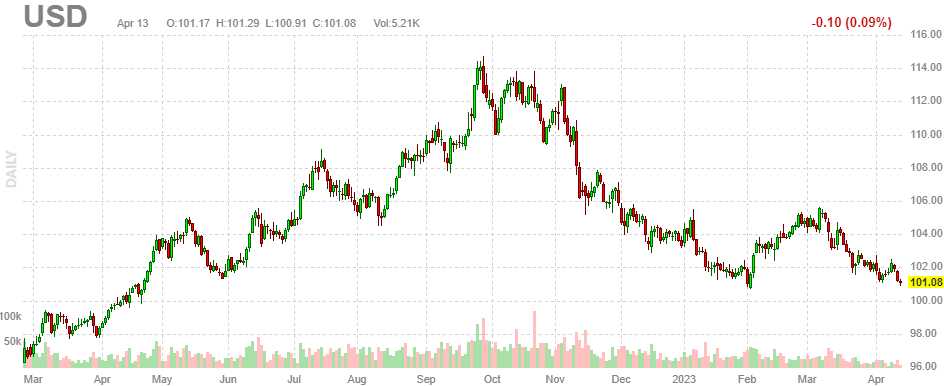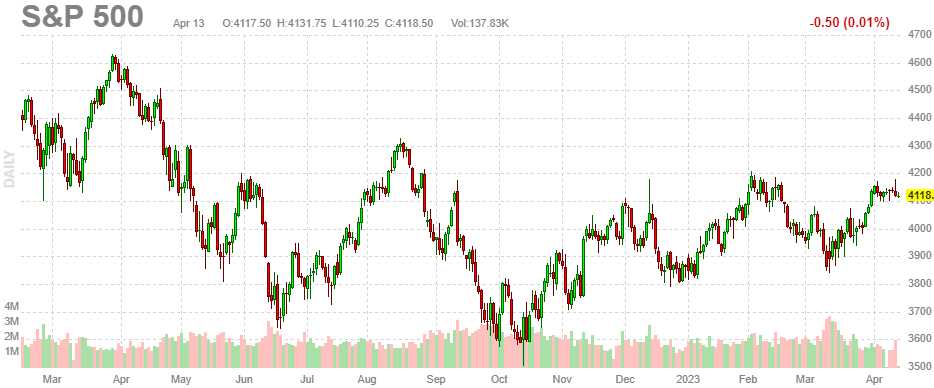 Things are not lining up well.
Things are not lining up well.
As you can see, the Dollar is back to it’s Feb low and that didn’t hold for very long because, seriously, what else are you going to keep CASH!!! in if not US Dollars?
While the US Dollar certainly has had its ups and downs, it remains the most widely used currency in the World for international transactions, making up roughly 89% of global forex trades according to the Bank for International Settlements. One of the primary reasons for this is the strength and stability of the US economy, which has historically been a safe haven for investors during times of uncertainty.
By contrast, many other major economies, including those in Europe and Asia, continue to struggle with a range of economic and political challenges. For example, the Eurozone has been beset by sluggish growth and high levels of debt, while Japan has been grappling with deflation (until recently) and an aging population. Russia is at war and China has their own property crisis to deal with and severe economic damage from Covid still to be addressed.
Overall, while there are certainly risks and uncertainties associated with holding US Dollars, there are few other realistic alternatives available for investors seeking a safe and reliable store of value. As such, it seems likely that the US Dollar will continue to play a dominant role in global finance for the foreseeable future and that means it’s VERY unlikely to stay below 103 for any period of time – so we should be worried for the indexes when it is.


As we have been discussing recently, there has been a lot of effort made to talk down the Dollar and most of it has been around the idea that the Fed will halt their rate hikes – because inflation is “under control” while the ECB (keepers of the only other currency that matters), who are mandated to keep Inflation at 2% or lower will have to keep hiking – because it Inflation is CLEARLY NOT “under control”.
 The Fed minutes from the March 22nd meeting revealed that the Bank raised interest rates to combat inflation pressures DESPITE being worried about the impact of the Banking Sector Stress on the economy and financial markets. The stress was triggered by the failure of Silicon Valley Bank and two other regional banks in early March, which caused a run on deposits and a sharp reduction in bank lending.
The Fed minutes from the March 22nd meeting revealed that the Bank raised interest rates to combat inflation pressures DESPITE being worried about the impact of the Banking Sector Stress on the economy and financial markets. The stress was triggered by the failure of Silicon Valley Bank and two other regional banks in early March, which caused a run on deposits and a sharp reduction in bank lending.
The Fed intervened by creating emergency lending facilities and reviewing the supervision and regulation of Silicon Valley Bank. Despite the crisis, the Fed officials were more concerned about Inflation than Growth, as they saw Inflation Expectations rising and Inflation Compensation Measures (wages, price hikes) increasing. They agreed that further gradual rate increases were appropriate to achieve their dual mandate. The Fed also monitored the liquidity conditions in the banking sector and the money markets, as well as the dollar funding situation abroad, following the bank failures and indicated that it would closely monitor incoming data and market developments and adjust its policy stance as appropriate to achieve its objectives – as usual.
 The Fed’s decision to raise interest rates DESPITE concerns over the banking stress and its potential impact on the economy is likely to contribute to more Dollar strength going forward. This is because higher interest rates tend to attract more foreign investment into the US, increasing demand for the Dollar and pushing up its value relative to other currencies.
The Fed’s decision to raise interest rates DESPITE concerns over the banking stress and its potential impact on the economy is likely to contribute to more Dollar strength going forward. This is because higher interest rates tend to attract more foreign investment into the US, increasing demand for the Dollar and pushing up its value relative to other currencies.
Additionally, the Fed’s focus on combating inflation pressures and its commitment to further gradual rate increases could also support the Dollar, as it signals to investors that the US economy is performing well and that the Central Bank is taking appropriate measures to maintain price stability.
The markets are getting a boost again this morning as PPI Prices, like CPI yesterday, are down considerably, at -0.5% from 0% last month and the Core PPI is down 0.1% from 0.2% last month (which was revised higher from 0% so net +0.1% really). It’s the same nonsense as yesterday, with a drastic drop in Energy Costs offsetting a rise in everything else and, like yesterday the “rally” will likely be just another opportunity for Fund Managers to dump shares on overly-enthusiastic Retailer Traders – otherwise known as “Dumb Money.”
Also, of great interest to investors – I’ve asked Warren to summarize yesterday’s EPA announcement:
 On April 12, 2023, the U.S. Environmental Protection Agency (EPA) announced new proposed federal vehicle emissions standards that will speed up the transition to a clean transportation future and address the climate crisis. The new standards are expected to deliver numerous benefits to public health and the environment. Through 2055, they are expected to avoid nearly 10 Billion tons of CO2 emissions, equivalent to over twice the total U.S. CO2 emissions in 2022, and reduce other harmful air pollution. The new proposed emissions standards for light, medium, and heavy-duty vehicles for model year (MY) 2027 and beyond would significantly reduce climate and other harmful air pollution, and lead to fewer premature deaths and serious health effects, such as hospital admissions due to respiratory and cardiovascular illnesses.
On April 12, 2023, the U.S. Environmental Protection Agency (EPA) announced new proposed federal vehicle emissions standards that will speed up the transition to a clean transportation future and address the climate crisis. The new standards are expected to deliver numerous benefits to public health and the environment. Through 2055, they are expected to avoid nearly 10 Billion tons of CO2 emissions, equivalent to over twice the total U.S. CO2 emissions in 2022, and reduce other harmful air pollution. The new proposed emissions standards for light, medium, and heavy-duty vehicles for model year (MY) 2027 and beyond would significantly reduce climate and other harmful air pollution, and lead to fewer premature deaths and serious health effects, such as hospital admissions due to respiratory and cardiovascular illnesses.
According to the EPA, the proposed standards are also expected to lower maintenance costs and deliver significant fuel savings for drivers and truck operators. The proposed standards would save the average consumer $12,000 over the lifetime of a light-duty vehicle as compared to a vehicle that was not subject to the new standards. Additionally, the proposals would reduce oil imports by approximately 20 Billion barrels. Overall, the EPA estimates that the benefits of the proposed standards would exceed costs by at least $1 Trillion.
The first set of proposed standards announced by the EPA is the “Multi-Pollutant Emissions Standards for Model Years 2027 and Later Light-Duty and Medium Duty Vehicles”. Between 2027 and 2055, the total projected net benefits of the light- and medium-duty proposal range from $850 Billion to $1.6 Trillion. The proposal is expected to avoid 7.3 Billion tons of CO2 emissions through 2055, equivalent to eliminating all greenhouse gas emissions from the entire current U.S. transportation sector for four years. The proposed standards are also projected to accelerate the transition to electric vehicles. Depending on the compliance pathways manufacturers select to meet the standards, EPA projects that EVs could account for 67% of new light-duty vehicle sales and 46% of new medium-duty vehicle sales in MY 2032.
The second set of proposed standards announced by the EPA is the “Greenhouse Gas Standards for Heavy-Duty Vehicles – Phase 3”. The proposed standards are designed to reduce the carbon footprint of heavy-duty trucks, which are among the largest sources of greenhouse gas emissions in the transportation sector. The proposal sets new, performance-based standards for greenhouse gas emissions from heavy-duty vehicles in MY 2027 and beyond, and it is expected to drive the development and deployment of innovative technologies to reduce emissions from heavy-duty vehicles.
The proposed standards are expected to lead to a 47% reduction in greenhouse gas emissions from new heavy-duty vehicles by May 2032 compared to the current standards. The EPA estimates that the new standards would save the average long-haul operator up to $50,000 per year in fuel costs and avoid up to 160,000 tons of NOx emissions per year. The proposal is also expected to reduce other harmful air pollution from heavy-duty vehicles, such as particulate matter and ozone precursors.
So it’s certainly going to be “Game On” for EV, EV Infrastructure and Solar for the next couple of decades – let’s pay close attention to that trend and shop for some bargains!







